Hinduism
Scientific Universal Cosmic Parallels of Hinduism
Published
4 years agoon
By
Vedic Tribe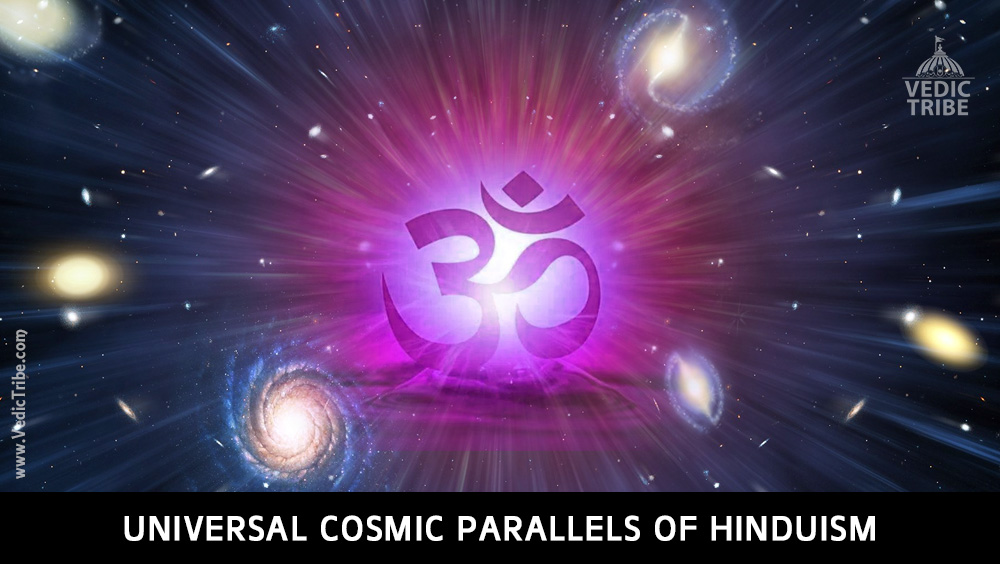
The most beautiful and deepest experience a man can have is the sense of the mysterious. It is the underlying principle of religion as well as all serious endeavors in art and science. He who never had this experience seems to me, if not dead, then at least blind. — Albert Einstein
Perhaps one of the most exciting — and unsettling — concepts in modern cosmology is the theory that we inhabit a parallel universe. “There are vibrations of different universes right here, right now. We’re just not in tune with them. There are probably other parallel universes in our living room — this is modern physics. This is the modern interpretation of quantum theory, that many worlds represent reality,” says Michio Kaku, professor of theoretical physics at New York University and author of Parallel Worlds: A Journey Through Creation, Higher Dimensions, and the Future of the Cosmos.
The concept of parallel universes may be novel and disconcerting to scientists, but it rests very comfortably in ancient Hindu cosmology. The Puranas, Hindu religious texts thought to date back to between 500 B.C. to 1500 B.C., are replete with descriptions of many worlds whose inhabitants are ruled by kings in the human plane and gods in a higher plane. The many gods, in turn, belong to many different worlds and planes of existence. At the highest level of the hierarchy are the trinity, namely, Brahma, Vishnu, and Mahesha, ruling the divine kingdoms. Brahma is the creator, who dreams the universe into being, which is maintained by Vishnu. What humans perceive as reality is in fact the dream of Brahma, misled by matter. Brahman (not to be confused with Brahma) is the ground of all reality and existence. Brahman is uncreated, external, infinite and all-embracing. It is the ultimate cause and goal of all that exists. All beings emanate from Brahman; all beings return back to the same source. Brahman is in all things and it is the true Self (atman) of all beings.Physicists hypothesize several levels of parallel universes. Max Tegmark, of the Massachusetts Institute of Technology, even envisions an infinite number of parallel universes: “In Infinite space, the most unlikely events must take place somewhere. People with the same appearance, name and memories as you, who play out every possible permutations of your life choices.”
The Paingala Upanishad, another religious text, describes the many worlds created by Brahman: “With those quintuplicated elements he created endless cores of macrocosms and for each of these fourteen appropriate worlds and globular gross bodies fit for each planes of them all.”
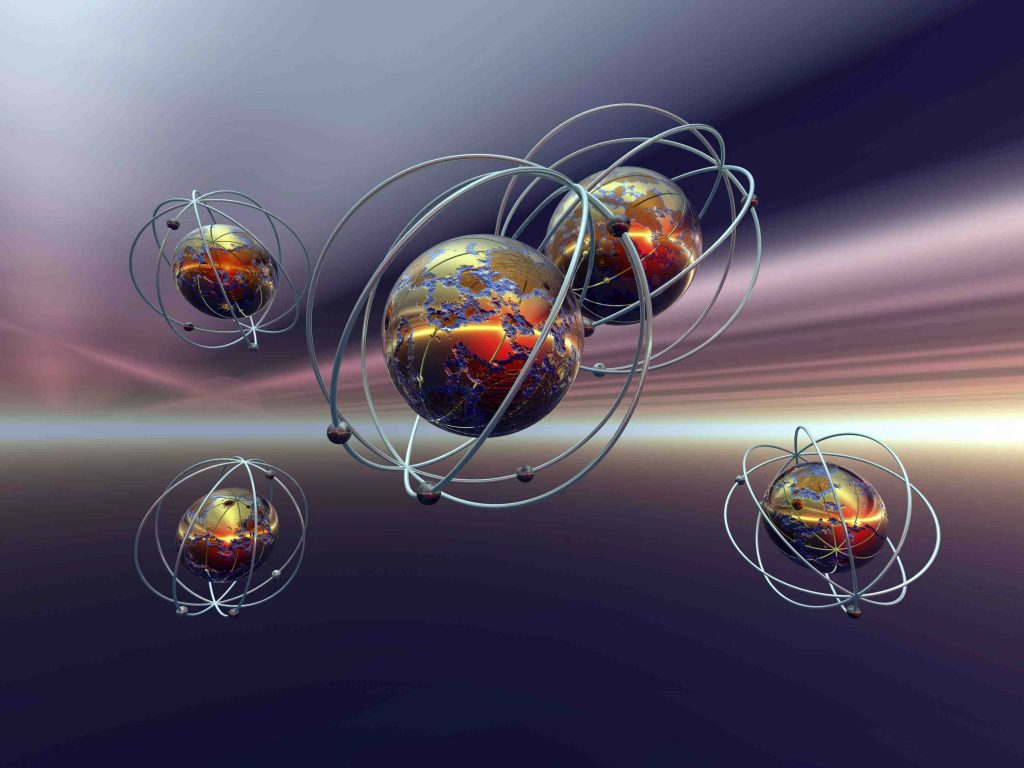
Among the many universes envisioned by physicists, one exists in extra dimensions and might be physically very close to us. As creatures of a three-dimensional world, we may not perceive it. But scientists hope that these universes might drop some clues to help us identify them, like ripples in a pond help us locate the actual disturbance. Modern scientific theories of creation and the world of particle physics help us develop a picture of our cosmos, which might be just one of many possible universes. In his best-selling series Cosmos, renowned astronomer Carl Sagan reflected on the parallels between modern cosmology and Hindu philosophy, noting: “Hindu religion is the only one of the world’s great faiths dedicated to the idea that the cosmos itself undergoes an immense, indeed an infinite number of deaths and rebirths. It is the only religion in which the time scales correspond, no doubt, by accident, to those of modern scientific cosmology .… There is the deep and the appealing notion that the universe is but the dream of the god who after a 100 Brahma years dissolves himself into a dreamless sleep and the universe dissolves with him until after another Brahma century he starts recomposes himself and begins again the dream, the great cosmic lotus dream. Meanwhile, elsewhere there are an infinite number of other universes each with its own god dreaming the cosmic dream.”
Vedic cosmology has scores of other eerie parallels with some of the most cutting edge recent cosmological theories of multiverse, oscillating universe, and the Big Bang, so it should come as no surprise that some of the greatest minds in science have turned to these 3,500-year-old cosmological ideas for inspiration and questions about our enigmatic universe. The Danish nuclear physicist and Nobel Prize winner Niels Bohr once wrote, “I go into the Upanishads to ask questions.”Observational evidence in support of parallel universes has come from NASA’s Wilkinson Microwave Anisotropy Probe (WMAP). While analyzing the Cosmic Microwave Background (CMB) radiation data, scientists discovered evidence of a huge void spanning almost one billion light years (1 light year is approximately 9.5 trillion kms). The void in the infant universe represents the absence of any material, which otherwise should have become stars and planets. None of the current cosmological theories can explain such huge voids in the data. Some physicists interpret this as the unmistakable imprint of another universe beyond the edge of our own. Physicist Mersini-Houghton and her colleagues have proposed a theory of entangled universes, under which they predict two huge voids, not just one. One of them has been found by WMAP data and they expect new data will reveal a second similar void. The recently launched Planck satellite by the European Space Agency, whose exceedingly sensitive detectors measure CMB radiation and which captured its first image in early September, may be able to ascertain this second void.
The idea that all structures that exist mathematically also exist physically is the foundation of the parallel universe concept. This hypothesis, known as the “ultimate ensemble,” predicts the existence of all universes that can be defined by mathematical equations. But many physicists disagree on the ground that all mathematical structures are not well defined.Striking as these similarities are, it does not mean that modern science has vindicated Vedic cosmology. For one, these modern cosmological theories may themselves be disproved and besides, many physicists remain skeptical of these theories. Some cosmologists, for instance, question the whole notion of multiverse. According to them, if the universe encompasses everything we know or ever want to know, it rules out any room for parallel universes. Some other models suggest that universes are finite in number and restricted by mathematical formulations.

Nevertheless, the concept of many worlds or parallel universes, which would have invited the ridicule of mainstream physicists, as it did when it was first proposed more than a half a century ago by U.S. physicist Hugh Everett, is currently one of the hottest trends in theoretical physics. The multiverse theory is the inevitable result of quantum mechanics, which represents a set of multiple “probable” states for a particle. When an observation is made, the particle chooses one of the multiple states measured by the observer and the other states collapse. This is the most basic principle behind the existence of many universes or multiverses.
Erwin Schrodinger, a leading theorist in quantum mechanics, who had a life-long interest in Vedanta philosophy, wrote: “What we observe as material bodies and forces are nothing but shapes and variations in the structure of space. Particles are just appearances. The world is given to me only once, not one existing and one perceived. Subject and object are only one. The barrier between them cannot be said to have broken down as a result of recent experience in the physical sciences, for this barrier does not exist.”Quantum physics, the study of the minutest particles that make up matter, has been remarkably successful, but it reveals a picture of a quantum reality so strange that our minds are unable to grasp it. For instance, quantum mechanical experiments have proved that objective reality is unlikely to have a separate existence. The nature of the ultimate reality is intertwined with our actions and uncertainty rules when we observe it. This is contrary to our common sense view that reality has an existence independent of the observer. In the realm of the smallest particles, however, objective reality is not an absolute entity that can be measured definitely as is true in classical physics.
The absence of objective reality implies that the material world could be an illusion — or, what Hindu sages call Maya. In Hinduism, Maya is the natural illusion that the material world is the only reality. It is a skewed perception, albeit commonly held, to believe that the material world is the fundamental reality. Maya, which has its roots in the Upanishads, denotes the power of God to make human beings believe in an illusion. The material world is the manifestation of Brahman, the infinite and immortal reality that is responsible for matter, energy, space, time and every being. The scriptures and philosophies seek to unveil the illusion to learn the ultimate truth.This is not very far removed from the concept of Brahman — the self-existent, immanent and transcendent supreme and ultimate reality. Brahman is the fundamental divine cause of everything in and beyond the universe. The nature of Brahman is explained as personal and impersonal and it is the source of creation of the universe and Gods. The universe and all the objects in it are the manifestation of a fundamental reality, which science doesn’t know yet. We understand the universe as an exchange of matter and energy and scientists often disagree about the fundamental building blocks of these phenomena.
Science employs its own methods and procedures toward that goal. Our universe and its subjects are creatures of spirit coated with matter that conceals the spirit from the light. Science can demonstrate its processes, is based on rationality and logic, and can be comprehended, but we are somewhat lost in the scheme of the ancient wisdom. Consider for example, this Upanishad expression, “That which permeates all, which nothing transcends and which, like the universal space around us, fills everything completely from within and without, that Supreme non-dual Brahman — That Thou Art.”
The scientific approach always assumes that fundamental reality is different from us and we are independent observers seeking truth. But many researchers now believe that we must rethink this assumption. Our observation impacts the observed reality, because we are part of it. This essentially is the Adwaitha philosophy, a cornerstone of Hinduism, which asserts that Brahman (ultimate reality) and Atman (self) are the same. Such a non-dualistic approach is advocated by many modern researchers, who argue that the effect of observation either changes reality or creates new realities.Our interpretations of the evolution of the cosmos, once based on myths and legends, have advanced markedly in the last century. We live in a universe that is beaming with billions of galaxies that are continuously expanding. We now know that this expansion is accelerating and we will never know what is beyond our cosmic horizon as no light will ever reach us from the expanding universe. It is ironic that we need many universes for the existence of our own universe.
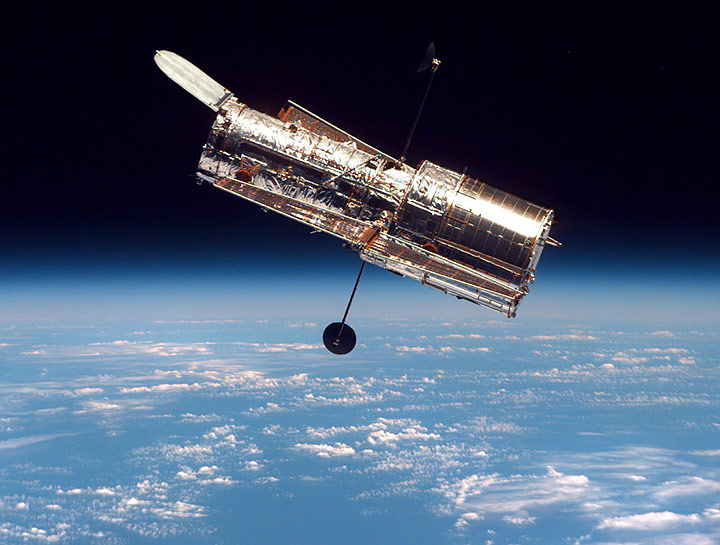
Human eyes operate on the visible light of the electromagnetic spectrum, allowing us to view only objects that emit light, which comprise only a small fraction of the universe. In modern times, telescopes replaced the unaided eye in the hunt for the unknown. Operating from ground and space, these telescopes scan the cosmos to draw pictures of material objects. Even with telescopes, we exploit the electromagnetic radiation to weave images of the cosmos. Whether it is gamma rays, x-rays, microwaves or visible light, throughout human history we have been dependent upon different forms of light to learn of cosmic events, which document our own history. The early universe was not transparent to light, which implies that we can write the history of our cosmos only up to the point when the first light began its journey, long after the creation of the universe. Additionally, the interaction of light with matter distorts the details of the information it carries. However, unlike light, gravitational waves propagate through cosmos without reflection or refraction. That could potentially allow us to create a pure picture of the cosmos beyond the levels light allows us.If a physical reality exists independent of human experience and that reality can only be expressed with our most logical language, mathematics, then observational science is not the only way to comprehend the ultimate mystery. This formulates the possible intersection of science, philosophy and ancient wisdom. Unlike the West, religion and science are not opposed fundamentally in Hindu traditions. Freeman Dyson, a theoretical physicist famous for his work in Quantum Field theory, says “Science and religion are two windows that people look through, trying to understand the big universe outside, trying to understand why we are here. The two windows give different views, but both look out at the same universe. Both views are one-sided, neither is complete. Both leave out essential features of the real world. And both are worthy of respect.”
The gravity wave detection is the objectives of LIGO (Laser Interferometer Gravitational-wave Observatory). Two of the biggest such interferometers in the United States — one in Hanford, Wash., and the other in Livingston, La. —are collectively called LIGO. These systems are sensitive enough to detect the ripples in the space-time fabric caused by cosmic events, such as supernova explosions, and transmitted by gravity waves. These waves carry the information of events, such as the explosion and collision of stars. It is estimated that by 2010, direct detection of gravity waves will be possible. Gravity is the weakest of all known forces in the nature and has confounded physicists for decades. Now string theorists believe that gravity may be leaking into parallel universes or other dimensions.
The Big Bang
The Big Bang, symbolizing the finite beginning of the infinite universe from a primordial hot and dense condition nearly 13.7 billion years ago, is presently the leading theory of the origin of the Cosmos, displacing another popular “steady state” model. The big bang theory is rooted in astronomer Edwin Hubble’s observations that the galaxies are expanding and moving away from each other. Evidence of the expansion was also found in the cosmic microwave background radiation captured by the Hubble Telescope in 2003. The big bang theory, formulated by George Gamow, still faces formidable challenges to meet the standards of science, but it is the best prevailing model for the universe’s origins.
“Then was not non-existent nor existent: there was no realm of air, no sky beyond it.The Hymn of Creation (Nasadiya Sukta) in the Rig Veda, written around 1500 B.C., describes similar big bang origins of the universe:
What covered in, and where? And what gave shelter? Was water there, unfathomed depth of water?
Death was not then, nor was there aught immortal: no sign was there, the day’s and night’s divider.
That One Thing, breathless, breathed by its own nature: apart from it was nothing whatsoever.
Darkness there was: at first concealed in darkness this all was indiscriminated chaos.
All that existed then was void and formless: by the great power of Warmth was born that Unit.”
~ (Translation by Ralph T.H. Griffith)
The cosmological constant is one of the biggest enigmas of modern cosmology. The comprehension of the cosmological constant might successfully explain repulsive dark energy. Two scenarios have been predicted for the distant future of the universe — the Big Rip or the Big Crunch. Depending on the critical density of the universe, these are the probable future of our cosmos. Either way, the current universe will end in trillions of years to come. That inevitable fate of the universe has led cosmologists to speculate on what follows the demise of our universe.The discovery of the accelerating nature of universe’s expansion demands a force surpassing gravity and stretching the fabric of the cosmos. Physicists call it dark energy, and the big bang model predicts that the universe consists of 73% dark energy and 23% dark matter. Normal matter, which constitutes just four percent of the universe, makes up all the stars, planets and living and non-living things that are known to us. The Big Bang model needs dark energy to account for the current state of the universe, although scientists have no lucid explanation for it. In fact, scientists believe dark energy is the same as the cosmological constant originally introduced by Albert Einstein to counterbalance the gravitational attraction of matter in the universe. He later discarded the cosmological constant when Hubble’s observations proved the expansion of the universe. Now, modern cosmologists think Einstein’s cosmological constant holds the key to the accelerated expansion of the universe.
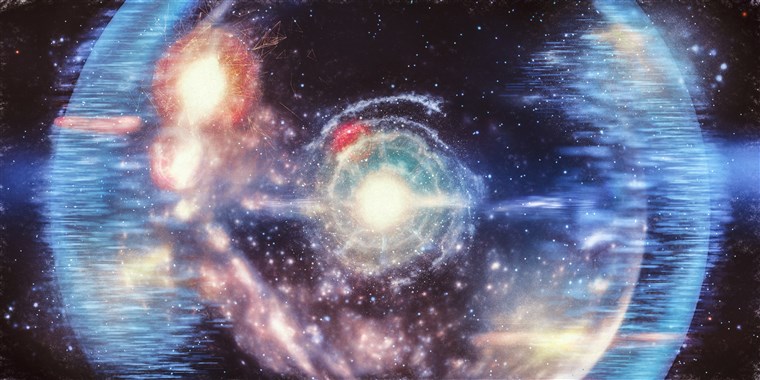
Paul Steinhardt of Princeton University and Neil Turok of Cambridge University recently proposed that the cosmological constant was once much larger, but that its value decayed with each manifestation of the universe. Their theory argues that the universe came into existence not just once, but in endless cycles of death and birth. Known as the “Cyclic Universe Theory,” it could explain the dark energy and its role in the acceleration of the universe. Because of endless cycles, the universe would be far older than the 13.7 billion years that scientists currently estimate. Steinhardt and Turok estimate that each cosmic cycle lasts about a trillion years. During this time, the universe runs its natural course, but all the while matter and energy fan out through space until they are extremely diluted. Once that happens, a cosmic collision follows, and each collision is essentially a new Big Bang that infuses the aging Universe with new matter and energy. In scientific terms, energy cannot be created or destroyed, but it can change forms and also matter-energy exchange is possible. When the current form of matter is destroyed, it can pave the way for a new form of matter or energy.
For instance, Kalpa, which is a day in the life of Brahma, is 4.32 billion years, the estimated age of Earth. By contrast, the common time scales of the universe in both Western science and religion until just a century ago, were just a few thousand years, not the billions and trillions of years envisaged by Vedic cosmology. As another example, the Surya Siddhanta, an astronomy textbook from ancient India, computed the earth’s diameter as 7,840 miles, against the modern measurement of 7,909 miles. Similar calculations of the earth-moon distance of 253,000 miles is reasonably close to the current measured distance of 238,857 miles. Surya Siddhantaalso provides close estimates of the diameters of five planets — Mercury, Venus, Mars, Jupiter and Saturn. What makes these measurements especially striking is that they are believed to have been written between 600 B.C. to 1500 B.C. That is almost 3,000 years before Nicolaus Copernicus and Johannes Kepler revolutionized Western astronomy, just by shifting from an earth-centered universe to a sun centric one.The metaphorical similarities between the newly proposed cyclic universe theory and Hindu cosmology are astounding. Hindus cosmology speaks about the universe being created, destroyed, and recreated in an eternally repetitive series of cycles. Brahma creates a new universe that would eventually be destroyed to begin another universe. According to Hindu cosmology, Brahma himself undergoes destruction after 100 Brahma years, 311 trillion years in the human scale, to pave the way for a new Brahma and thus a new universe. Gods are also subjected to the laws of nature and their lives occupy the cosmos in time scales that are comparable to the astronomical scales in such an oscillating universe.
However, remarkable as these similarities are, there are also significant departures between Vedic and modern cosmology. The Sun’s diameter (32,500 miles, according to Surya Siddhanta) is far from the modern day value of 870,000 miles. Modern science postulates that organic molecules (matter) evolved to become life and consciousness, which is fundamentally different from Hindu philosophy’s approach that they cannot evolve from matter unless matter has the inherent potential to provide life and consciousness. Furthermore, the Big Bang model proposes that the mass-energy before the universe came into being was concentrated at a single point. The Vedas, by contrast, assert that in the beginning there was no mass-energy and it was a complete void. Even the cyclic model of the universe, while bearing some similarity to Hindu cosmology, is different. The ancient model says the cycles are independent, but modern cyclic theory assumes dependence.
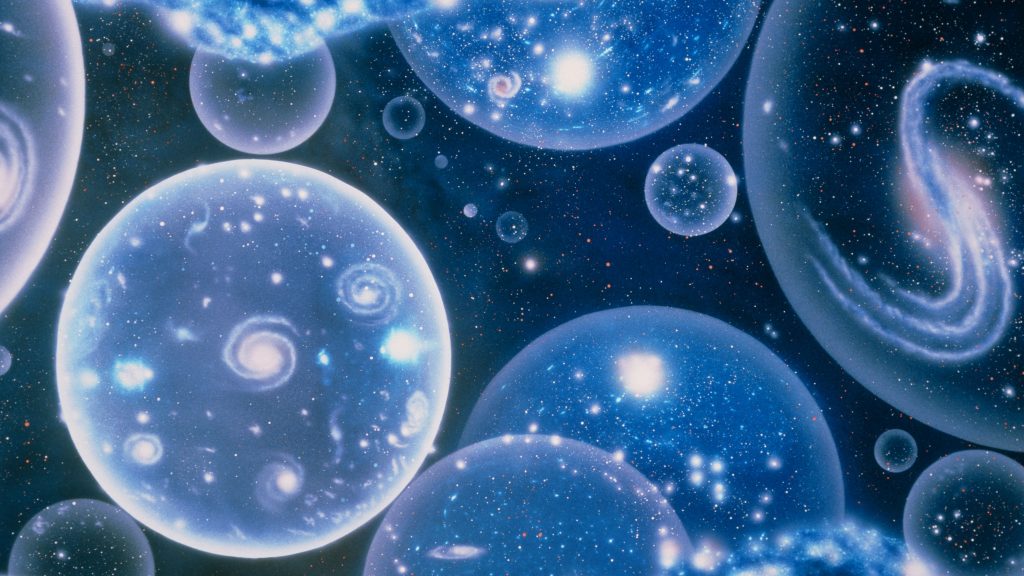
Nevertheless, many modern cosmologists, awakened to the limits of observational sciences, are intrigued by the cosmological visions of the Vedas and the Upanishads, even though we don’t understand the processes that yielded their cosmic insights. Perhaps the strongest symbolic acknowledgment of the parallels between modern and Vedic cosmology is reflected in the Natraja statue outside CERN, the European Organization for Nuclear Research, which has built the world largest particle accelerator, the Large Hadron Collider (LHC), 17 miles in circumference, capable of shooting particles at 99.9999% the speed of light, on the France Switzerland border. When the collider becomes fully operational in 2010, it will look for the Higgs Boson, often referred to as “God’s particle,” which is suspected to be responsible for determining the mass of a material object. The fundamental particles are mainly classified into two Fermions ( a reference to Enrico Fermi, who conducted the first nuclear chain reaction that led to the development of first nuclear bomb) and Bosons (a reference to S.N Bose, the Indian physicist who published his findings with Einstein in 1924, now known as Bose-Einstein statistics). Bosons play a crucial role of interaction between different fermions to create normal matter.
The 6 feet Natraja statue gifted to CERN in 2004 by the Indian government depicts Shiva’s dance of creation and destruction, not unlike the dance of fundamental particles that generate and destruct, manifesting the interchangeable nature of matter and energy in the universe.
A plaque next to the Shiva statue captures the modern significance of the metaphor of Shiva’s cosmic dance from Fritjof Capra’s best-seller The Tao of Physics: “Modern physics has shown that the rhythm of creation and destruction is not only manifest in the turn of the seasons and in the birth and death of all living creatures, but is also the very essence of inorganic matter and for the modern physicists, then, Shiva’s dance is the dance of subatomic matter. Hundreds of years ago, Indian artists created different forms of visual images of dancing Shiva in a beautiful series of bronzes. In our time, physicists have used the most advanced technology to portray the patterns of the cosmic dance. The metaphor of the cosmic dance thus unifies ancient mythology, religious art and modern physics.”
Dreams of Forever
Whatever awe one experiences at the vast expanse of the night sky, it is difficult for the human mind to comprehend the scale of the universe.
The sun, the star at the center of our solar system, is almost 93 million miles away. It takes light from the sun 8 minutes to reach us, so the sun we see is actually the way it was 8 minutes earlier. The sun dominates our solar system, accounting for 99.86 percent of its mass. 1.3 million earths could fit inside the sun, whose diameter of 870,000 miles is 110 times that of earth.
But even the sun and our solar system are a faint dust in the vastness of the universe, which is infinite in volume, populated with 100 billion galaxies, each with trillions of stars in the observable universe alone.
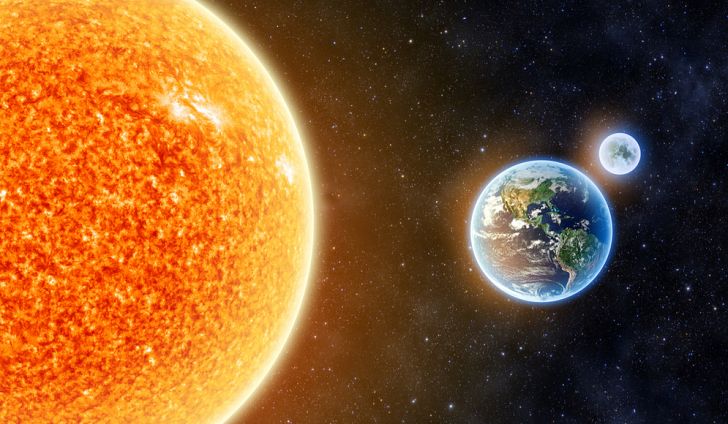
The distances are so vast that astronomers represent them in light years, equivalent to 5.9 trillion miles, the distance covered by light, the fastest permissible speed, in one year. A typical galaxy is 30,000 light years in diameter and is separated from its nearest neighbor by 3 million light years. Our galaxy, the Milky Way, is 100,000 light years in diameter and the closest galaxy to us is 2.5 million light years away. It would take us 100,000 years traveling at the speed of light, 186,000 miles per second to traverse our galaxy edge to edge.
Cosmologists believe our universe originated 13.73 billion years ago with a Big Bang, although newer oscillating theories of the universe postulate that the Big Bang was only the most recent recreation of the universe, which has been through countless cycles of births and destruction over trillions of years.
~ Santosh Mathew, PhD, Professor, researcher and science writer. His research works in atomic physics were published in the Journal of Physics and Z.physik. His research interest includes developments in modern physics and cosmology with historic and mythological orientation to the scientific progression.
You may like
Hinduism
Significance of Bilva Leaf – Why is it dear to Lord shiva?
Published
4 years agoon
March 12, 2021By
Vedic Tribe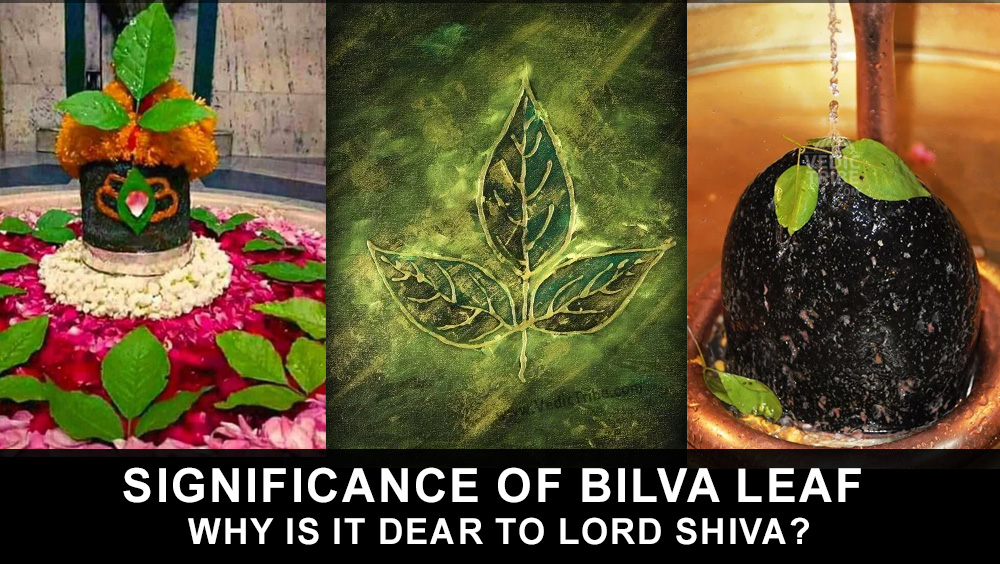
– Arun Gopinath
Hindus believe that the knowledge of medicinal plants is older than history itself, that it was gifted hundreds of thousands of years ago to the Vedic by Lord Brahma, the divine creator.
Thus when the Rishis of the Ayurveda sought to heal human suffering, they were able to draw on knowledge that had already been evolving for millennia in the forests of India. One tree about which they had a very deep knowledge was the Bilva tree. The science of Ayurveda values the Bilva highly for the medicinal properties contained in its root, fruit and leaves. According to Swami Sivananda, it is a healing tree which cures all diseases caused by vata (wind) and gives strength to the body.
More commonly known as the Bel Tree in India as well as other warm countries, this is a sacred tree having sacrificial importance and the first thing we can notice about the leaves is that they are generally trifoliate. This trifoliate leaf is symbolic of Trikaal or the Hindu Trinity of Devas known as Brahma Vishnu and Mahesh. The other names of this tree are Wood apple and its botanical name is Aegle marmilos.
The Bilva leaf or Patra as it is known, represents the Trinetra or three eyes of Lord Shiva, the main aspects like Trishakti (volition, action and knowledge), the three Shiva lingams and the three syllables of AUM or Omkar and are most favorite of Lord Shiva.
There are also five formed Bilva leaves known as PanchaDal patra found on some Bilva trees and these too are held as sacred for the worship of Lord Shiva. Bilva tree grows to a height of 8 meters with thorns. The leaves are alternate, ovate, trifoliate and aromatic. The tender leaves and shoots are consumed as salad greens. The flowers bloom in the month of May and will have a sweet fragrance.
It appears from all the Hindu texts and scriptures that the Bilva tree itself has been held very sacred and auspicious and is considered very holy since time immemorial thats its significance is mentioned in Mahapuranas in various forms of mantras. The Shiva Purana mentions a particular narration of how the usage of Bilva due to its scientific as well as medicinal properties is of great adavantage to Mankind.
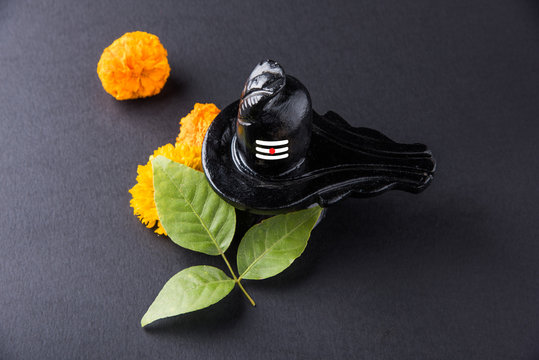
The 22nd Chapter of maha ShivaPurana narrates ” The trifoliate Bilva Patra is so sacred to Lord Shiva & is therefore a symbol of the Lord. Adored by all the Gods, its importance is difficult for anyone to comprehend. The sacred tree can only be known to a limited extent. Sacred sites of this Earth can only find their place at the root of this auspicious tree. Those who meditate upon Lord Mahadeva in His form of linga at the root of Bilva obtain Moksha & become purified souls by attaining Shiva. Such are the marvels of this sacred Bilva.”
The famous Shri Bilvashtakam (v. 6–7) Mentions :
Lakshmyaascha stana utpannam Mahaadeva sadaa priyam,
Bilva vriksham prayachchhaami eka bilvam Shivaarpanam.
Darshanam bilva vrikshasya sparshanam paapanaashanam,
Aghorapaapasamhaaram eka bilvam shivarpanam.
Translation :
Born from the heart of Goddess Lakshmi, the Bilva tree is ever dear to Mahadeva. So I ask this tree to offer one Bilva leaf to Lord Shiva. Even if (one) has darshan ( view) of the Bilva tree, and touches it, surely frees one from sin. The most terrible karma is destroyed when a Bilva leaf is offered to Lord Shiva.
It is also believed that Lakshmi, the Goddess of Wealth, also lives in the bel tree. Those who perform the puja of Shiva and Parvati devoutly, using the leaves, will be endowed with spiritual powers.
Scientific Advantages
According to Hindu scriptures, the Bilva is Triguna which is connected to the three Gunas or components of natural characteristics of the tree. In Hindu philosophy, the three Gunas are Sattva, Rajas & Tamas with Sattva being the pure most while Tamas normally is to do with darkness & ignorance.
The Sattvic component is believed to be more centered within the bilva patra and therefore the high capacity to absorb and emit Sattvic frequencies. This has various effects on the environment as well as on anyone merelt touching the leaf. One of them is the reduction of Rajasic-Tamasic atoms present in the atmosphere & more importantly within the human body.
A Sattvic leaf like bilva patra when brought in proximity of a person suffering from negative energies such as distress and anxiety is believed to medically reduce these energies within the human body. People with negative outlook towards life and their environment normally do not realize they have negative energies building up within their body and are at a risk of subconsciously harpering destructive thoughts also.
Whenever such people come into contact with a Sattvic atmosphere, what they fail to realize is their negative energies try to fight the positivity of a Sattva predominant environment. This struggle can build up at various levels and can vary from the human mind thinking negatively and can result sudden bursts of anger to destruction of things around them.
Medicinal uses
The roots, skin, fruits and the leaves of the Bilva tree are used for medicinal purpose. Bilva has astringent, edema lessening, anti-diarrhea, laxative and appetizer properties hence, can be used to cure both internal and external diseases.
The sacred tree has many medicinal usages and is advantageous in curing many human ailments such as :
- Bleeding gums.
- Bel fruit clears diarrhea, dysentry, phlegm, high blood pressure, morning sickness in pregnancy, stress.
- Asthma can be controlled when a mixture of dry bel leaf powder & honey is consumed daily
- Jaundice can be cured by consuming the extracted juice of the bilva leaves
- Anemia can be cured by drinking the powder of the bel fruit mixed with milk
- Bel fruit keeps the skin rejuvenated when pasted into a face pack; also cures joint aches
Hinduism
Concept of Time and Creation (‘Brahma Srishti’) in Padma Purana
Published
4 years agoon
March 12, 2021By
Vedic Tribe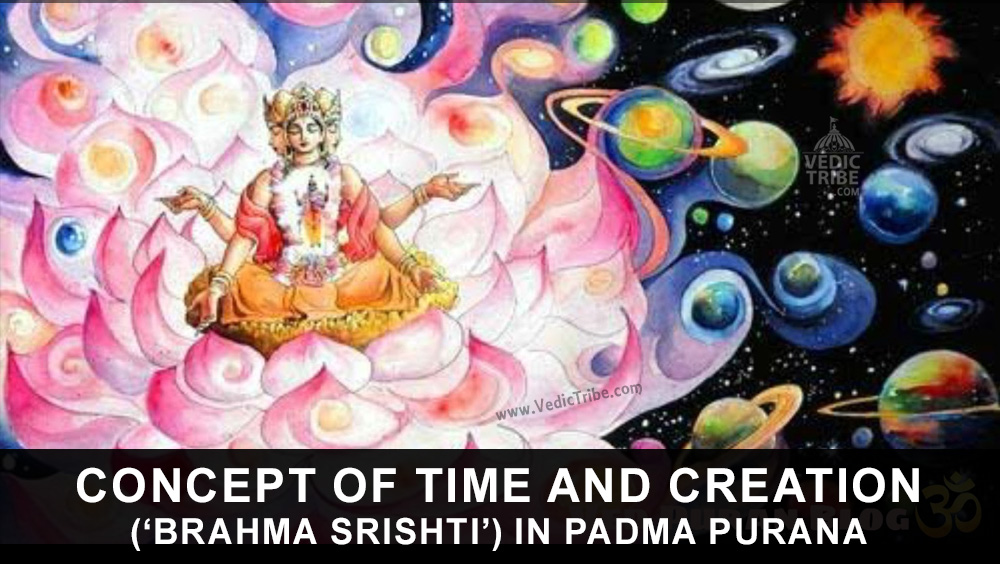
Pulastya Maha Muni affirmed to Bhishma that Brahma was Narayana Himself and that in reality he was Eternal. But in a formal sense it was stated that Brahma was ‘created’ and in that normally recognised manner Brahma had hundred years of age; apparently, the concept of Time would have to have a basis and that was why Brahma’s age was determined notionally as of hundred Brahma Years; in other words, ‘Para’or the first half was over and his present age has entered the ‘Paraartha’, the second half (viz. Fifty first year).This was how, the concept of Time emerged.
Every fifteen ‘Nimeshas’ constitute one ‘Kaashtha’; thirty Kashthas one one ‘Kala’; thirty Kalas make one ‘Muhurtha’; thirty Muhurtas make one day/night, thirty day/nights make on ‘Maasa’; (half Maasa makes one ‘Paksha’), six Maasas make one ‘Ayana’ and two Ayanas-Dakshinayana and Uttarayana- make one ‘Year’. Dakshinayana is a night for Devas and Uttarayana their day. One hundred human years make one day-night of Devas.
Twelve thousand Deva Years make four Yugas viz, Satya Yuga, Treta Yuja, Dwapara Yuga and Kali Yuga and these four Yugas make one Maha Yuga which is Brahma’s one day! Satya Yuga comprises 4800 DevaYears including ‘Sandhya mana’ of 400 years and ‘Sandhyamsha maana of additional 400 years; Treta Yuga comprises 3600 Deva Years including 600 years of ‘Sandhya/ Sandhyamsha mana’each; Dwapara Yuga of 2400 years including 200 years of ‘Sandhya/ Sandhyamsha mana’each and Kali Yuga of 1000 years including 100 years each of Sandhya / Sandhyamsha manas.Deva Years are 360 times more than human years. For instance, the duration of Kali Yuga in human year terms is 432,000 years; Dwapara’s is 864000; Treta Yuga’s is12, 96,000 and of Satya Yuga is 17, 28,000 years; all the Yugas totalling 432, 00, 00,000 (432 million) make one Chaturyuga and that constitutes one Brahma Day!
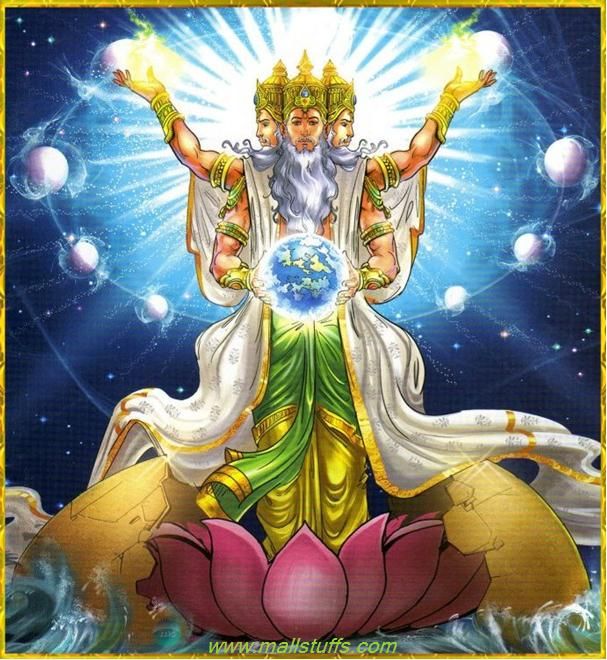
In one day of Brahma there are fourteen Manvantaras and each Manvantara has 8, 51,000 of Deva Years. There are two kalpas on one day-night of Brahma.At the end of the previous Kalpa, Brahma felt fresh from the previous night and found that Prithvi was submerged in water while Bhagavan Varaha Deva entered into water and Prithvi prayed to him; in response, Varahadeva emanated a ‘Ghur Ghur’ sound which was like the reverberation of Sama Veda, lifted up Prithvi from Rasala loka by the might of his horns, Devas rained fragrant flowers from the sky, Rishis went into rapturous tributes to Vishnu’s incarnated Varaha Rupa; and Brahma implored the latter to allow him recommence Srishti with his blessings as also to preserve and administer the Creation that he would so generate even as the Lord gracefully replied to say: ‘Tathastu!’ (So be it!).
Brahma’s first Srishti being Maha Tatva, the creation of Tanmatras was known as Bhuta Sarga or the Second Srishti; Vaikarika or Satvika Ahankara was the third Srishti of Indriyas or Aindriya Sarga; the Fourth Srishti is the Mukyha Sarga related to Mountains, Forests and other Sthaavara Srishti; the fifth Srishti relates to Pashu-Pakshi (Animals and Birds); the seventh Srishti was called Deva sarga or Urthva faced and was of Devas; and Seventh Srishti was of Manava Sarga; the Eighth was of Anugraha Sarga which could be of Satvika or Tamasic nature and finally the Ninth Srishti called the Kaumara Sarga which could be of Prakrita or Vaikrita Marg.
Depending on the carry forward of one’s own balance of ‘Papa-Punya’of the previous time-frame preceding the Pralaya, placement of lives was commenced by Brahma in the New Age. Arising out of his ‘Manasika Samkalpa’ (Mind born Proposal), Brahma created various species including Devas, Asuras, Pitaras and human beings. From his thighs, the evil Asuras emerged and as per his free will various birds were created.
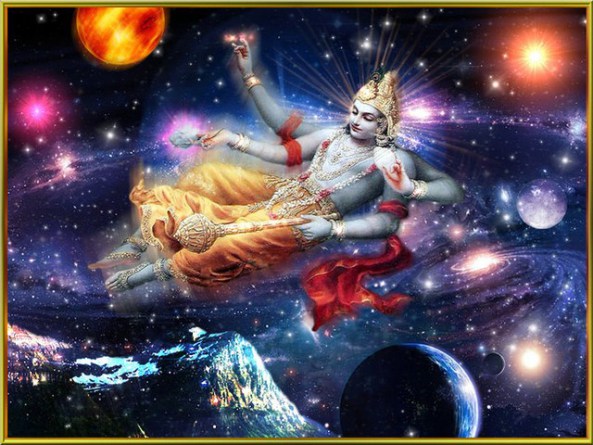
From his stomach surfaced cows, his shoulders the wolves; his face created horses, elephants, asses, nilgais, deer, camels, etc.each species multiplying several others. Brahma’s body hairs created fruits, roots and foodgrains. From his right extreme face, Brahma created, Gayatri Chhandah, Rig Veda, Tivritstoma, Rathantara, Agnihoshtha yagna; from South-faced he created Yajur Veda, Tristhub Chandas, Panchadasha stoma, Brihatsaama, etc; Sama Veda, Jagati Chhanda, Saptadashastoma, ‘Vairupa’ etc; from the Western face; Brahma created Ekavimshatstoma, Atharva Veda, Aptoryama, Anushthup chhanda, and Vairaja from the Uttaravarti Mukha. Miscellaneous ‘Pranis’ were created from any of the limbs of Brahma. To sum up thus at the beginning of the Kalpa, Prajapati Brahma created Devas, Asuras, Pitaras and human beings as also of Yakshas, Pishachas, Gandharvas, Apsaras, Siddhas, Kinnaras, Raakshasaas, Lions, Birds, Animals and Reptiles.
Focussing attention on human beings now, Bhishma asked the highlights of Varnashrama Vidhi and Pulastya Muni explained that Brahma created Brahmanas from the face, Kshatriyas from ‘Vakshasthali’ (chest), Vaishyas from thighs; and Shudras from the feet.These four Varnas are the important constituents of ‘Yagnas’; Devas are satisfied wirh their respective portions of ‘Havis’ (oblations) to Agni and being pleased with the Yagnas, Devas bestow good rains and good crops which leads to material prosperity.
The hearts and hands of every body tend to be clean and social customs and virtuous living would go hand in hand. Prajapati decided the duties of the Four Varnas, depending on the professions that human beings tended to follow like Brahmanas performing Yagnas, Vratas, Temple Tasks, and enabling various religious deeds of Virtue in favour of the members of three other Varnas etc.; Kshatriyas discharging the responsibilities of Kingship, Administration, Security against external enemies, collection of taxes and maintenance of Internal Law and Order; Vaishyas performing business, farming, trading and all matters involving finance, provision of materials to others by allowing reasonable profits for the services given etc. and Shudras supporting the members of the Three Varnas in the discharge of duties being undertaken by them.
Brahma materialised the above various kinds of Creations by applying his mental faculties but was not quite satisfied as the next generations so created were not adequate to fill in the universe; therefore he created Sages like Bhrigu, Pulaha, Kratu, Angira, Marichi, Daksha, Atri and Vasishtha, in addition to the four ‘Manasa Putras’ viz. Sanaka, Sanandana, Sanatana and Sanat Kumaras. As not all these sons were interested in family lives, Brahma created Rudra from his forehead and decided that half of the body be a woman; thus Eleven Rudras got materialised along with as many Rudranis who had a variety of Rupas ranging from ‘Sowmya’ (composure), ‘Krura’(unkindness), ‘Shanta’ (peacefulness), ‘Shyama’ (darkness), ‘Gaura’ (wheatish) and such other colours.
Further on, Brahma created Swayambhu Manu and the latter’s wife Shatarupa; the Manu couple gave birth to sons Priyavrata and Uttanapada and daughters Prasuti (married to Daksha) and Akruti (married to Ruchi Prajapati). To Prasuti and Daksha were born twenty four daughters, thirteen of whom were Shraddha, Lakshmi, Dhruti, Pushti, Tushti, Megha, Kriya, Buddhi, Lajja, Vapu, Shanti, Sidhi, and Kirthi (all these thirteen were married to Dharma); eleven more daughters were Khyati, Sati, Sambhuti, Smriti, Preeti, Kshama, Sannati, Anasuya, Urja, Swaha and Swadha; they were wedded respectively to Bhrigu, Shiva, Marichi, Angira, Pusasthya, Kratu, Atri, Vasishtha, Agni and Pitras.
The sons of Daksha’s daughters were Kamak by Shraddha, Darpa to Lakshmi, Niyam to Dhriti, Santhosh to Tushti, Lobha to Pushti, Shruta to Megha; Danda, Vinay and Naya to Kriya, Bodha to Buddhi, Vinay to Lajja, Vyavasayak to Vapu, Kshema to Shanti, Sukha to Siddhi, and Yash to Kirti.These were all the sons of Dharma. Kaam and Nandi gave birth to Harsha, the grand son of Dharma. Bhrigu and Khyati gave birth to Devi Lakshmi who was Lord Narayana’s wife. Bhagavan Rudra accepted Sati as his wife (Daksha’s daughter) but Devi Sati sacrificed her life pursuant to Daksha’s Yagna to which Rudra was uninvited but Sati insisted in attending it; she felt highly insulted by her father Daksha who also offended Rudra Deva and Rudra eventually destroyed Daksha Yagna. — with Srilan Srisukumaran.
Hinduism
Karma Yoga – Yog Through Selfless Actions
Published
4 years agoon
February 23, 2021By
Vedic Tribe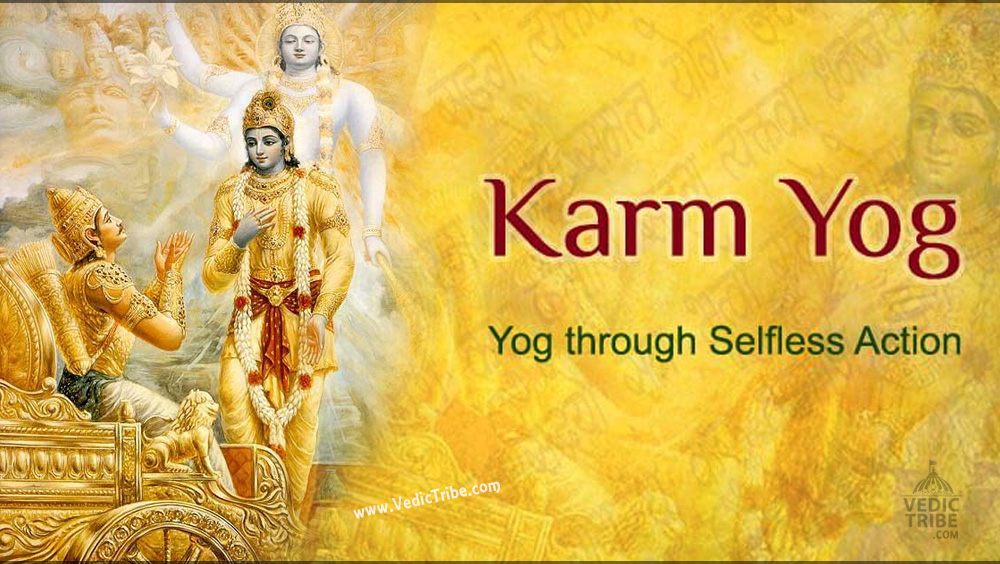
Karma Yoga is Meditation in Action:
“Karma” means action and “yoga” means loving unity of our mind with God. To perform karma and also practice yoga means to remain engaged in activity in the world while remaining in a state of devotional unity with God. This is true spiritual action.
Your bhakti yoga meditation practice will combine all these aspects and it will include:
- Daily sitting meditation
- Daily dynamic meditation woven seamlessly into the fabric of your life’s activities
Before we look at guidelines for these, let’s explore how process is described in the Hindu scriptures.
Karma Yoga of the Bhagavad Gita:
One of the most important scriptures of Hinduism, the Bhagavad Gita, was revealed under unusual circumstances: moments before a war and in the middle of a battlefield. It is comprised of a 700-verse dialogue between Lord Krishna, supreme God, and Arjuna, his loving disciple.
The all-in-one solution of the Bhagavad Gita for eliminating karma is Lord Krishna’s advice to practice akarma or actions that have no karmic consequence.
If we could perfect akarma in daily activity, the consequences of our actions would automatically be neutralized — even though we are engaged in action.
This means that from the point of view of karmic debt, no consequences would be added to our “account”. The only key to this is we must maintain an unbroken and continuous devotion to God.

Karma yoga philosophy in the Bhagavad Gita is summed up in one statement of Lord Krishna:
“Remember Me and fight.”
But is it really possible to simultaneously do devotional remembrance and be engaged in activity? Can the mind function in two places at the same time? This is definitely impossible, but for karma yoga to be done properly, both have to happen simultaneously.
For example, if you are at work and absorbed in a project, and remember God occasionally, how are both these actions accounted for as karmas?
The time you spent in devotional remembrance will be considered devotional action, and the time you spent engrossed in working will be considered normal action. This is not karma yoga.
Plus, a common misconception describes karma yoga as “performing action without being attached to the results”. Although this sounds noble, is it psychologically possible for any human being to do this?
The fact is because we are constantly trying to find authentic happiness, we will always anticipate the outcome of our actions in advance of doing them.
The practical form of the Gita’s karma yoga…
In the Gita, Krishna was both supreme God and Arjuna’s spiritual guide. Krishna advised Arjuna to surrender to Him and to simply follow His instructions. By transferring his motivation for action to a divine personality, Arjuna would not be responsible for the outcome of the actions he was instructed to perform.
For example, a police officer is issued a revolver, which he is instructed to use in the line of duty by his superiors. It could happen that he kills someone in the pursuit of law and order. In the eyes of the justice system, this will not be considered a crime. He did not use his own mental motivation to decide to kill someone — he simply followed the guidelines given to him by his superiors.
In Arjuna’s situation, in spite of engaging in war, all his actions were counted as devotion, because his heart, mind and body were fully dedicated to the will of Krishna.
This again highlights one of the most important points of karma yoga: The mind is the performer of action, not the physical body.
It is our personal motive that has to be carefully redirected for karmic consequences to change or be neutralized.

A Closer Look at the Spiritual Theory
If a practitioner is surrendered to a true divine Guru, and performs actions entrusted to him by his Guru, that activity is considered not only karma yoga, but also bhakti or spiritual action. It will be free of a karmic consequence. That practitioner is not directly attached to the results of that activity because his motive is to follow the instructions of his Guru.
Arjuna accepted Lord Krishn as his Guru at the very beginning of the Gita when he declared he was Lord Krishna’s disciple. He preserved the understanding during the entire Mahabharata War that he was doing service for his Guru.
In this way, just by holding this intention, his devotion remained unbroken and his actions were considered karma yoga. Thus, service to a true Guru is called karma yoga or devotion.
Practically speaking, a Guru will give instructions on how a practitioner can keep his mind engrossed in a state of continuous devotional remembrance. Simply by following these instructions, a disciple is automatically practicing karma yoga.
Those devotional guidelines take the form of (1) karma sanyas and (2) karma yoga.
Karma Sanyas – Quiet Time for Meditation
And old method of dyeing fabric in India was to place a cloth in a dye bath and then allow it to dry in the sun.
After drying, the intensity of the color faded. Again the cloth was placed in a dye bath, again it was placed in the sun, and again the color faded, but the second time more of the color remained.
After entering the dye bath multiple times, the color eventually became intense and fixed.
Similarly, to establish devotion in our hearts and minds, it is important to have a structured daily practice of sitting meditation.
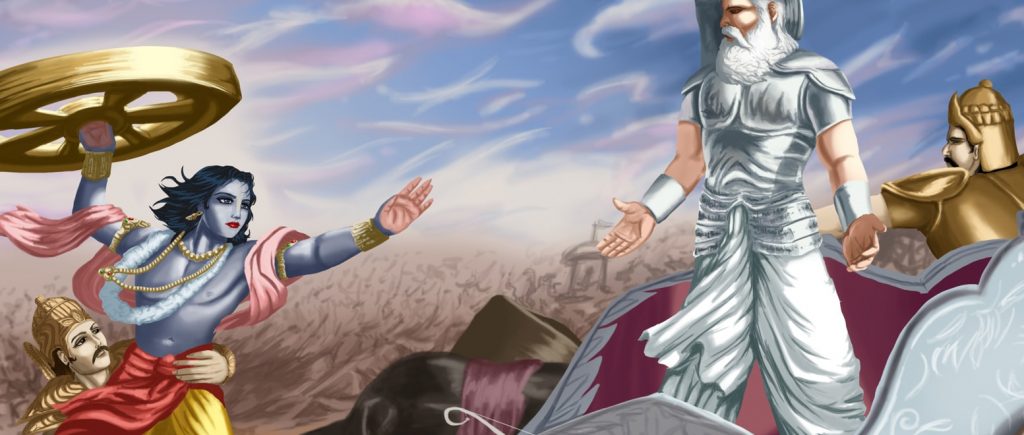
The main elements of a daily devotional practice include:
- Heart-centered prayer
- Kirtan or chanting meditation combined with active visualization
- Aarti-the offering of light – a brief ceremony that reaffirms the spirit of our devotional dedication
Karma Yoga – Dynamic Devotion
For the attainment of divine love, the Vedas state that there is only one rule and one prohibition that apply to bhakti yoga meditation. The rule is: “Always remember Radha Krishna.” The prohibition is, “Never forget Radha Krishna.”
This means that after our sitting meditation, our meditation should continue — while eating, sleeping, walking, working, talking, resting, and so on.
Wherever you are, all the time, whatever you are doing, remember your divine beloved and don’t forget Him! This simultaneous devotion and action is karma yoga. This state of devotional consciousness is cultivated over time with practice.
For example, in the old days street musicians with hand organs kept small monkeys. A monkey by nature is extremely active. How to make a monkey’s nature conform to sitting still, and that, too, in a confined space?

The musician’s technique was to first restrain the monkey with a 100-foot rope. If the monkey tried to go outside of this range, he was stopped. He thought, “Okay, I’ll jump around in a 100-foot area.”
When he was tied with a 50-foot rope he thought, “I went 100 feet yesterday, today I’m restricted to this much.” So he jumped around in a 50-foot area.
When the monkey was finally limited to only 1 foot of rope, he sat quietly, “Why should I drive myself crazy? I’ll just sit here.”
The human mind has this same monkey-like nature. It roams far and wide. Our goal is not to tame it’s active nature, but to train it to roam in a particular area. This is done by gently tying it with the devotional rope of love.
In sitting meditation we cultivate a feeling a devotional relationship with God. In active meditation we can continue this in three ways:
- Embed your intention — Every person has a mission that guides his life’s activities. For example, very few people like to work, but they do it because their mission is to support themselves or their family. While they are at work, although this motive is hidden deep in their mind, it still guides their decisions and actions.Similarly, when we firmly understand the purpose of our life is God-realization, this intention deeply embeds itself in the mind. If cultivated properly, this subconscious devotional intention remains in all our activities, even when we are sleeping.
- Feel divine presence — in sitting meditation we visualize and feel our relationship to God’s personal form. In activity, take hourly breaks for 30 seconds or a minute and with open eyes sense the presence of your worshipped form of God or Radha Krishna. Simply feel you are not alone. Imagine them near or far, sitting, standing or in any position, in any mood of love.
- Share your awareness — After visualizing God’s presence, either feel He is watching you or that you are showing Him what you are doing.
- Avoid wrong association — your associations and environment will affect your feeling of divine connection. Be mindful and avoid those situations that divert your devotional intention.
There is no restriction of time, place and activity for this remembrance. It can be done anywhere, at any time. You do not need to sit in a particular position or have closed eyes. This very simple practice will recall the blissful feelings of your seated meditation and help to stabilize your devotional experience.
Follow us on Facebook
Follow us on Twitter
Latest


Seven Vows and Steps (pheras) of Hindu Wedding explained
Views: 6,403 Indian marriages are well renowned around the world for all the rituals and events forming part of the...


Sari or Saree is symbol of Indian feminism and culture
Views: 5,542 One of the most sensual attires of a woman in India is undoubtedly the sari. It is a...


Atithi Devo Bhava meaning in Hinduism and India
Views: 4,789 Atithi Devo Bhava, an ancient line taken from the Hindu scriptures and was originally coined to depict a visiting person whose...


Sanskrit Is More Than Just A Method To Communicate
Views: 4,004 -By Ojaswita Krishnaa Chaturvedi anskrit is the language of ancient India, the earliest compilation of sound, syllables and...


Significance of Baisakhi / Vaisakhi
Views: 4,924 Baiskhi is also spelled ‘Vaisakhi’, and is a vibrant Festival considered to be an extremely important festival in...


Navaratri: The Nine Divine Nights of Maa Durga!
Views: 5,974 – Shri Gyan Rajhans Navratri or the nine holy days are auspicious days of the lunar calendar according...


History of Vastu Shastra
Views: 8,410 Vastu Shastra (or short just Vastu) is the Indian science of space and architecture and how we may...


Significance of Bilva Leaf – Why is it dear to Lord shiva?
Views: 7,665 – Arun Gopinath Hindus believe that the knowledge of medicinal plants is older than history itself, that it...


Concept of Time and Creation (‘Brahma Srishti’) in Padma Purana
Views: 8,514 Pulastya Maha Muni affirmed to Bhishma that Brahma was Narayana Himself and that in reality he was Eternal....


Karma Yoga – Yog Through Selfless Actions
Views: 7,936 Karma Yoga is Meditation in Action: “Karma” means action and “yoga” means loving unity of our mind with...

